How to install Windows 10 64-bit UEFI standard - GPT
The UEFI - GPT standard has been around for a long time, but it seems to have only become prominent with the advent of Windows 10, which only supports the installation of 64-bit operating systems instead of the old standard, Legacy BIOS. However, with many outstanding improvements and optimal support for Windows 10, this standard is worthy of being a replacement and installing 64-bit Windows 10 with UEFI - GPT standard is not strange.

Creating a USB boot or USB to install Windows 10 is usually nothing strange, but how do we create a USB boot or USB to install Windows 10 64 bit standard UEFI - GPT, and is there any difference in the installation method? Please leave your answer in the article below.
Instructions for installing Windows 10 64 bit UEFI standard - GPT
WHAT IS UEFI?
Before going into the article on how to install 64-bit Windows 10 with UEFI - GPT, let's learn a little about UEFI.
UEFI is a new format standard launched in 2005, and is now very popular on a number of devices. The advantage of the UEFI standard is that in addition to inheriting the old Legacy BIOS standard on the computers we have used up to now, it It also allows faster operating system startup.
And the biggest advantage of the UEFI standard you can see is the hard drive, the hard drive can support up to 1 ZB (1 billion TB of capacity) instead of only 2TB like the MBR standard, increasing the number of partitions to 128. But of course UEFI only supports 64bit operating systems, not backward compatible like Legacy MBR.
What to prepare:
- Download Rufus , specialized software to install Windows 10 64 bit UEFI - GPT standard.
- Download Windows 10 64 bit. (Note to choose version)
1. Format the USB and load the Windows 10 installer according to UEFI - GPT standard.
Step 1: After downloading and installing Rufus and opening the software, you will see this software automatically recognize your USB if you plug it in. Leave all parameters as shown in the picture and click on the drive icon .

Step 2: Find the path to the location containing the Windows 10 64 bit ISO file according to the link above we provided and click Open to select.
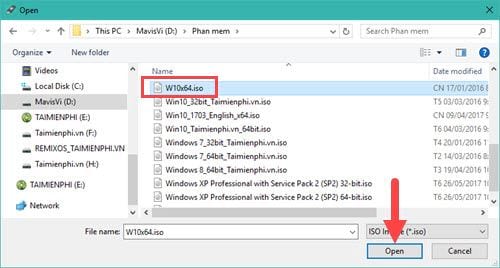
Step 3: After making your selection, the word Ready appears, click Start to start creating a USB to install Windows 10 64 bit standard UEFI - GPT.
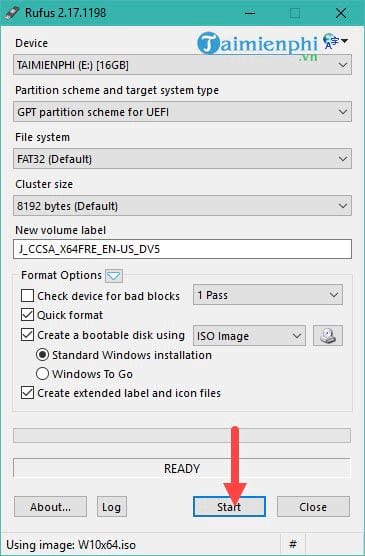
Step 4: Before installing Windows 10 64 bit UEFI - GPT, the system will ask again if you want to delete all old data in the USB, confirm OK .
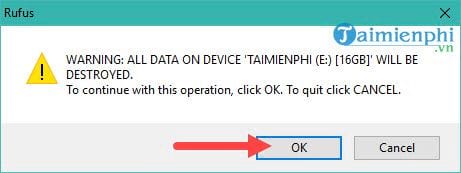
This process will take about 5 minutes including loading and copying Windows 10 to USB.
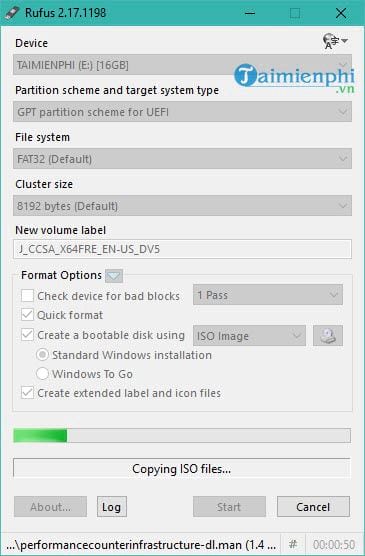
Once completed, just click Close to turn it off.
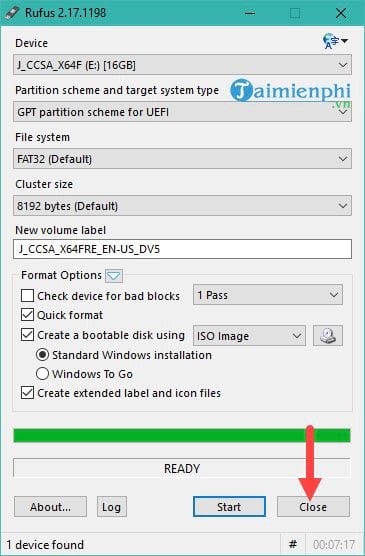
So the process of installing Windows 10 64 bit UEFI - GPT standard is completed, now please restart your computer to install Windows 10.
2. Install Windows 10 64 bit.
Step 1: First, go to the Bios of your computer or laptop and select the UEFI standard for USB. Depending on the type of motherboard, the display will be different. Also, please refer to how to enter the Bios to know what type of product you are using.
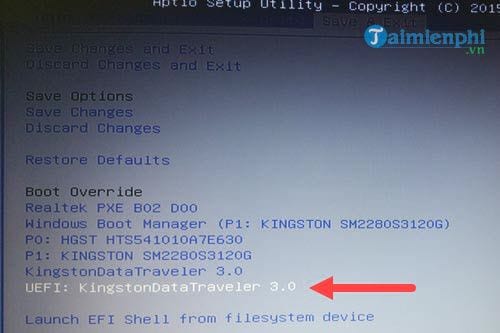
Step 2: Here is the basic Windows 10 installation step, you can click Next .
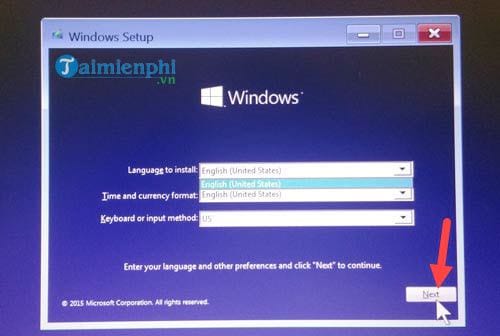
Next, click Install to proceed with the installation
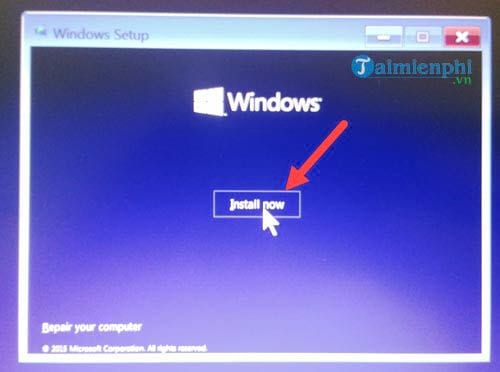
Step 3: Choose the version of Windows 10 to install. This step depends on your choice and TipsMake recommends choosing Windows 10 Pro .
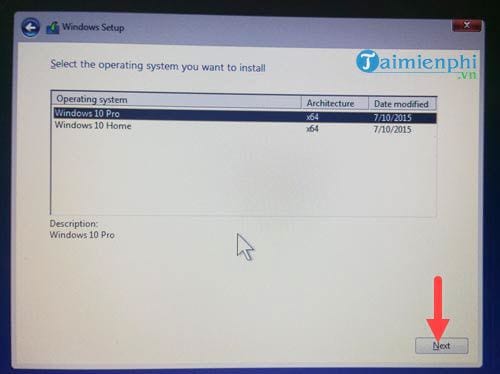
Step 4: The system asks us to Update Windows 10 or just reinstall it. In fact, to install 64-bit Windows 10 with UEFI - GPT standard, we must select the option, Update Windows 10. There we will proceed. Format and reinstall Windows.

Step 5: At this step you must really pay attention, with the UEFI standard, your hard drive must be converted to GPT or MBR format as before, otherwise there will be a message as shown below.
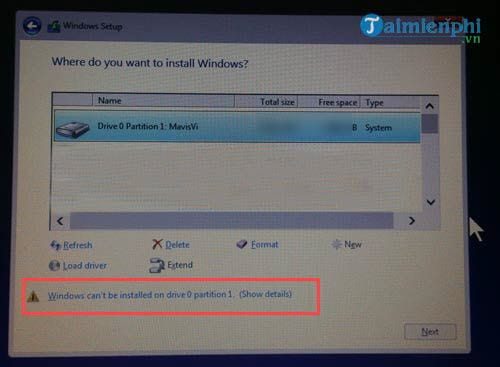
To convert the drive to GPT format, follow the method below.
Step 6: Still in the same interface, press the key combination Shift + F10 to open Command Prompt , here you enter Diskpart .
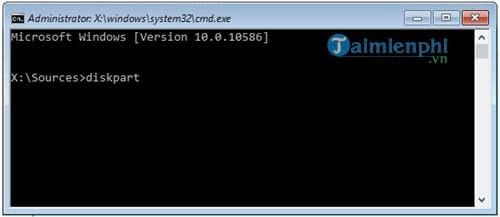
Step 7: Enter the List disk command to list the hard drive.
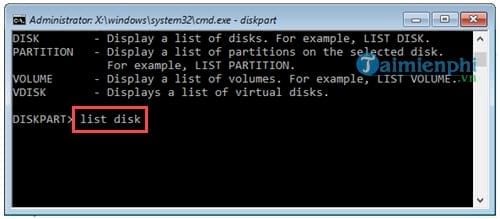
And the hard drive list results are displayed immediately afterwards
Note: The above is our example, in reality you may have 2 or 3 separate drives.
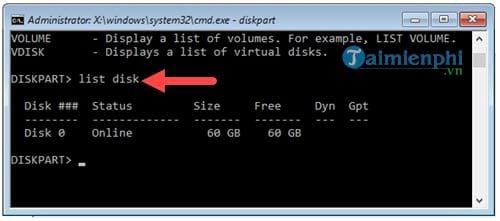
Step 8: If the drive you determine to install Windows on is Disk 0 , type the command select Disk 0.
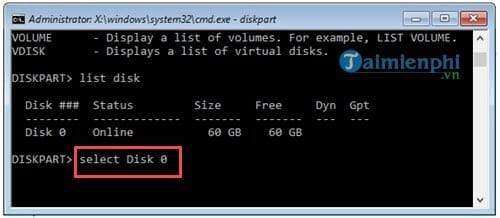
Step 9: Type the Clean command after selecting the drive to format.
Note: The Clean or Clean All command may cause your computer's data to be lost if the CDE drives are on the same hard drive, not separate hard drives. Therefore, you need to consider before using this drive or maybe skip this command and then proceed to Format later.
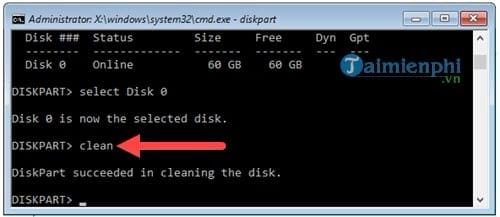
Step 10: Next, type the Convert GPT command to convert the drive from MBR to GPT.
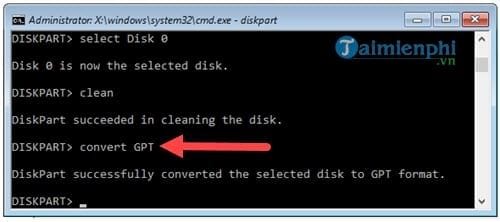
Step 11: Finally, press the list disk command to check if the drive has been converted to GPT or not.
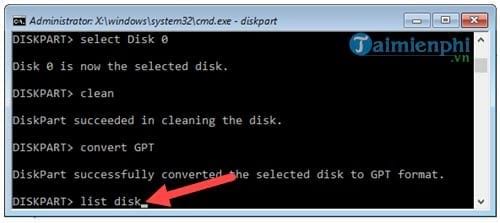
If there is a * in the GPT column , it means you have completed converting the hard drive to GPT.
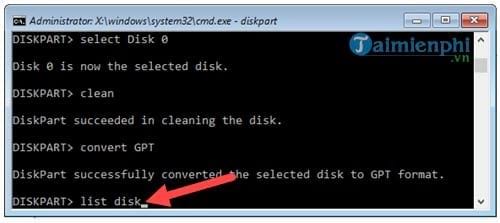
Now you can turn off Command Prompt, click Refresh on the Windows 10 installation interface and proceed with the installation as usual until you get to Windows 10. Readers can see more details on how to install Windows 10 here if they have never installed this operating system before.
The most important steps to install Windows 10 64 bit UEFI standard - GPT TipsMake has guided you in great detail. For the remaining work of installing Windows 10, please refer to the link above. And then try to experience whether there is any difference between using Windows 10 normally or following the UEFI - GPT standard.
If you already have Windows 10 64 bit UEFI - GPT installed, why don't you try creating a USB boot with UEFI standard to facilitate fixing Windows errors when necessary, in addition, this is also necessary when the UEFI standard becomes very popular. As for now, let's learn how to create a standard UEFI USB boot to see if it is any different from usual.
You should read it
- Differences between UEFI and BIOS
- 5 ways to fix lost UEFI Firmware Settings menu error in Windows 10
- How to convert Legacy BIOS to UEFI in Windows 10
- How to enter BIOS (UEFI) on Windows 10
- How to create UEFI standard USB BOOT - GPT containing the Win 7/8 / 10 installer
- Steps to convert MRB to GPT drive structure in Windows 10
- Concept of UEFI standard in computers
- How to check the computer that supports EFI / UEFI or Legacy BIOS
May be interested
- Differences between UEFI and BIOS
 which uefi or bios is better and which one to use? this is a good question for anyone who wants to learn how basic hardware works. the following is a list of differences between uefi and bios
which uefi or bios is better and which one to use? this is a good question for anyone who wants to learn how basic hardware works. the following is a list of differences between uefi and bios - 5 ways to fix lost UEFI Firmware Settings menu error in Windows 10
 when trying to open the uefi bios menu, you may find that you cannot access uefi firmware settings. this may prevent you from fixing some system problems.
when trying to open the uefi bios menu, you may find that you cannot access uefi firmware settings. this may prevent you from fixing some system problems. - How to convert Legacy BIOS to UEFI in Windows 10
 in previous versions of windows, you had to reinstall the entire operating system if you wanted to convert legacy bios or master boot record (mbr) to uefi or guid partition table (gpt).
in previous versions of windows, you had to reinstall the entire operating system if you wanted to convert legacy bios or master boot record (mbr) to uefi or guid partition table (gpt). - How to enter BIOS (UEFI) on Windows 10
 instructions on how to enter the bios on windows 10 for you, along with video demonstration.
instructions on how to enter the bios on windows 10 for you, along with video demonstration. - Steps to convert MRB to GPT drive structure in Windows 10
 in previous versions of windows, you were forced to reinstall the entire operating system if you wanted to convert from master boot record (mbr) (legacy bios) to guid partition table (gpt) (uefi).
in previous versions of windows, you were forced to reinstall the entire operating system if you wanted to convert from master boot record (mbr) (legacy bios) to guid partition table (gpt) (uefi). - How to check the computer that supports EFI / UEFI or Legacy BIOS
 how to know if windows starts in uefi or legacy bios mode, please refer to the following article of network administration.
how to know if windows starts in uefi or legacy bios mode, please refer to the following article of network administration. - Set BIOS and UEFI password to protect data on your Windows 10 computer safely
 on windows 10 operating system provides login password or account password to protect important data of users. however, the drawback of these features is that it can be easily bypassed without resorting to the support of the 3rd party application.
on windows 10 operating system provides login password or account password to protect important data of users. however, the drawback of these features is that it can be easily bypassed without resorting to the support of the 3rd party application. - What is a TIB file? How to ghost a computer with a standard .tib file UEFI - GPT
 the article provides information you need to know about the tib file and instructions for using the .tib file to ghost your computer in accordance with uefi - gpt standards. we invite you to follow us!
the article provides information you need to know about the tib file and instructions for using the .tib file to ghost your computer in accordance with uefi - gpt standards. we invite you to follow us! - How to disable / enable UEFI Secure Boot in Windows 10
 disabling uefi secure boot mode in windows 10 may be necessary to activate the graphics card or to boot the pc with an unrecognizable usb or cd.
disabling uefi secure boot mode in windows 10 may be necessary to activate the graphics card or to boot the pc with an unrecognizable usb or cd. - How to install Solus Linux
 recently, the linux community has given winged compliments to solus linux. this is understandable because this is a beautiful operating system with lots of great features. in a world where most popular linux distributions are 'derivative ubuntu', solus linux really stands out.
recently, the linux community has given winged compliments to solus linux. this is understandable because this is a beautiful operating system with lots of great features. in a world where most popular linux distributions are 'derivative ubuntu', solus linux really stands out.










 How to start Windows 10 quickly, access Windows 10 at high speed
How to start Windows 10 quickly, access Windows 10 at high speed 2 How to change Windows 10 computer wallpaper
2 How to change Windows 10 computer wallpaper How to adjust time on Windows 10, change day and month time when error occurs
How to adjust time on Windows 10, change day and month time when error occurs The simplest way to turn on and off High Contrast on Windows 10
The simplest way to turn on and off High Contrast on Windows 10 How to retrieve forgotten Windows 10 password
How to retrieve forgotten Windows 10 password The fastest way to adjust screen off time in Windows 7/8/8.1/10
The fastest way to adjust screen off time in Windows 7/8/8.1/10